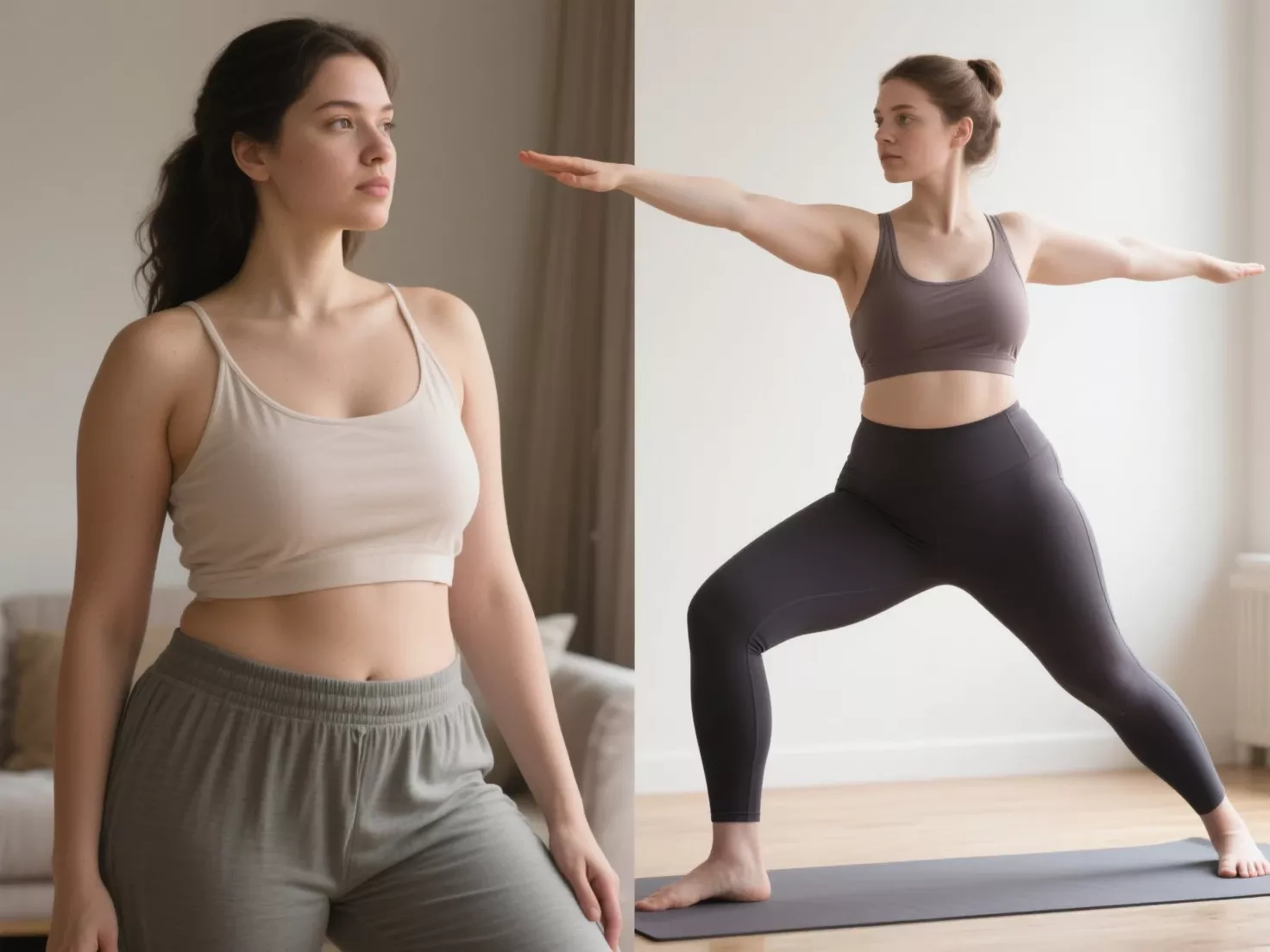Yes, you can do yoga on a bed, but it comes with certain considerations.

While a bed is not the traditional surface for practicing yoga, it can serve as an alternative for people with specific needs, such as beginners, seniors, or individuals recovering from injuries.
Here’s a detailed look at when and how practicing yoga on a bed can be effective, along with its benefits and limitations.
1. When is Bed Yoga Suitable?

Yoga on a bed can be particularly useful in the following situations:
- For Beginners: If you’re just starting and don’t feel comfortable on a hard mat, practicing simple poses on a soft surface like a bed can ease you into yoga.
- For Seniors: A bed provides extra cushioning, which can be gentle on the joints and knees, reducing discomfort for older individuals.
- For Recovery and Rehabilitation: If you’re recovering from an injury or dealing with conditions like arthritis or back pain, a softer surface minimizes pressure and strain on sensitive areas.
- Morning or Bedtime Routine: Practicing yoga first thing in the morning or right before sleeping on your bed can help you wake up gently or wind down for better sleep.
2. Benefits of Doing Yoga on a Bed

- Added Comfort: The bed’s soft surface reduces pressure on the body, making yoga more accessible for people with joint pain or mobility limitations.
- Gentle Movements: It allows for slow, restorative yoga poses that focus on relaxation, flexibility, and light stretches.
- Convenience: You don’t need any additional equipment or a dedicated yoga space. It’s as simple as rolling out of bed or lying down to start your practice.
- Improved Sleep: Gentle yoga poses on the bed can calm the nervous system, reduce stress, and promote better sleep. This is particularly effective for bedtime routines.
3. Limitations of Doing Yoga on a Bed
While bed yoga has its benefits, it also comes with a few limitations:
- Lack of Stability: The soft, uneven surface of a bed can make it difficult to balance, especially for standing or advanced poses (e.g., Tree Pose or Warrior Pose).
- Reduced Support: Beds lack the firmness of yoga mats, which are designed to provide stability and grip during poses.
- Less Core Engagement: Balancing on a bed can require less core activation, making it less effective for strengthening exercises.
4. Best Types of Yoga for the Bed

The following styles and poses work best when practiced on a bed:
Restorative Yoga
- Restorative yoga focuses on relaxation and deep stretches. The bed’s soft surface enhances comfort, making it ideal for poses that require holding positions for extended periods.
- Poses to Try:
- Child’s Pose (Balasana): Relieves tension in the lower back and shoulders.
- Legs Up the Wall Pose (Viparita Karani): Improves blood circulation and reduces fatigue.
- Supine Twist (Supta Matsyendrasana): Releases tension in the spine and aids digestion.
Gentle Stretching
- A bed is perfect for gentle stretches that loosen stiff muscles without straining your body.
- Poses to Try:
- Cat-Cow Stretch: Opens up the spine and improves flexibility.
- Knees-to-Chest Pose (Apanasana): Releases tightness in the lower back.
- Seated Forward Bend (Paschimottanasana): Stretches the hamstrings and promotes relaxation.
Bedtime Yoga for Better Sleep
- Gentle bedtime yoga can help you calm your mind, reduce stress, and prepare for deep, restful sleep.
- Poses to Try:
- Reclined Butterfly Pose (Supta Baddha Konasana): Opens the hips and calms the body.
- Corpse Pose (Savasana): A meditative pose for total relaxation.
- Supine Spinal Twist: Relieves tension and prepares the body for sleep.
5. Tips for Practicing Yoga on a Bed
To make the most out of bed yoga, keep the following tips in mind:
- Start with Simple Poses: Stick to seated or lying-down poses that don’t require much balance or stability. Avoid advanced or standing poses like Warrior II or Tree Pose, as the bed’s softness can cause instability.
- Focus on Alignment: Pay attention to your posture to avoid straining your neck, back, or joints. Move slowly and mindfully.
- Use Pillows or Bolsters: Support your body with pillows to make restorative poses even more relaxing and comfortable.
- Wear Comfortable Clothing: Loose, breathable clothes ensure maximum comfort during your practice.
- Time It Well: Practice bed yoga in the morning to wake up gently or at night to prepare your body for restful sleep.
6. Should You Replace a Yoga Mat with a Bed?
While a bed can be an excellent alternative for restorative and gentle yoga, it should not entirely replace a yoga mat, especially for regular or intensive practices. Yoga mats offer:
- Firm Support: Mats are specifically designed to provide grip, stability, and balance, making them essential for standing or balancing poses.
- Better Posture Control: Mats ensure alignment and proper engagement of muscles during poses.
- Safety: On firm, non-slip mats, you reduce the risk of injuries, such as slipping or falling.
For more challenging poses or intense yoga flows, stick to a yoga mat. Use the bed for gentle stretches, relaxation, and restorative practices.
Conclusion
Yes, you can practice yoga on a bed, but it’s best suited for gentle, restorative, or beginner-level poses.
A bed offers comfort and convenience, making it perfect for seniors, those recovering from injuries, or anyone looking for a calming morning or bedtime yoga routine.
However, for regular or advanced yoga sessions, a yoga mat is still the preferred choice for stability, safety, and effectiveness.
By combining both methods—using a bed for relaxation and a mat for active practice—you can enjoy a balanced and effective yoga experience that supports both body and mind.



